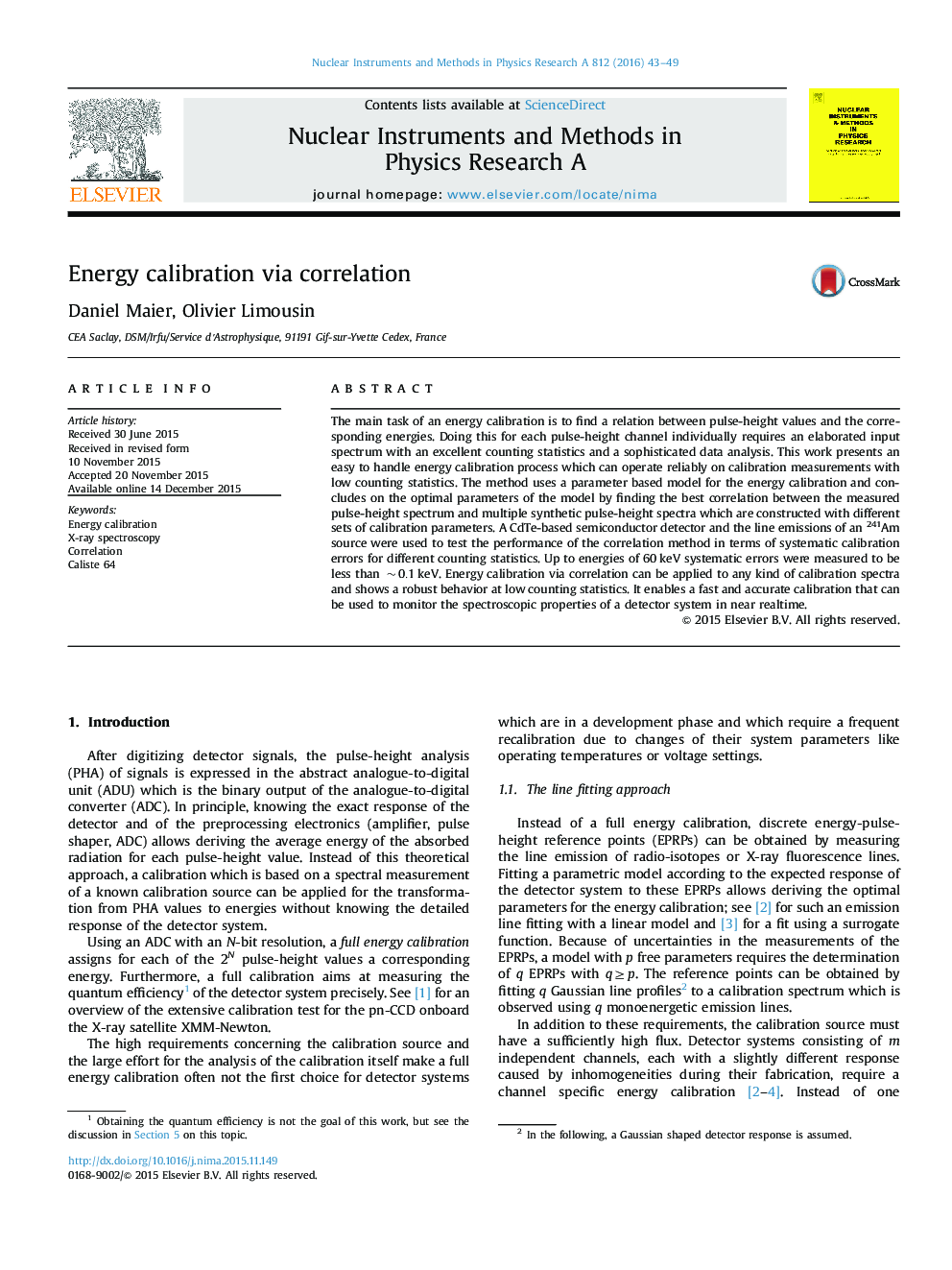| Article ID | Journal | Published Year | Pages | File Type |
|---|---|---|---|---|
| 1822118 | Nuclear Instruments and Methods in Physics Research Section A: Accelerators, Spectrometers, Detectors and Associated Equipment | 2016 | 7 Pages |
The main task of an energy calibration is to find a relation between pulse-height values and the corresponding energies. Doing this for each pulse-height channel individually requires an elaborated input spectrum with an excellent counting statistics and a sophisticated data analysis. This work presents an easy to handle energy calibration process which can operate reliably on calibration measurements with low counting statistics. The method uses a parameter based model for the energy calibration and concludes on the optimal parameters of the model by finding the best correlation between the measured pulse-height spectrum and multiple synthetic pulse-height spectra which are constructed with different sets of calibration parameters. A CdTe-based semiconductor detector and the line emissions of an 241Am source were used to test the performance of the correlation method in terms of systematic calibration errors for different counting statistics. Up to energies of 60 keV systematic errors were measured to be less than ~0.1keV. Energy calibration via correlation can be applied to any kind of calibration spectra and shows a robust behavior at low counting statistics. It enables a fast and accurate calibration that can be used to monitor the spectroscopic properties of a detector system in near realtime.
